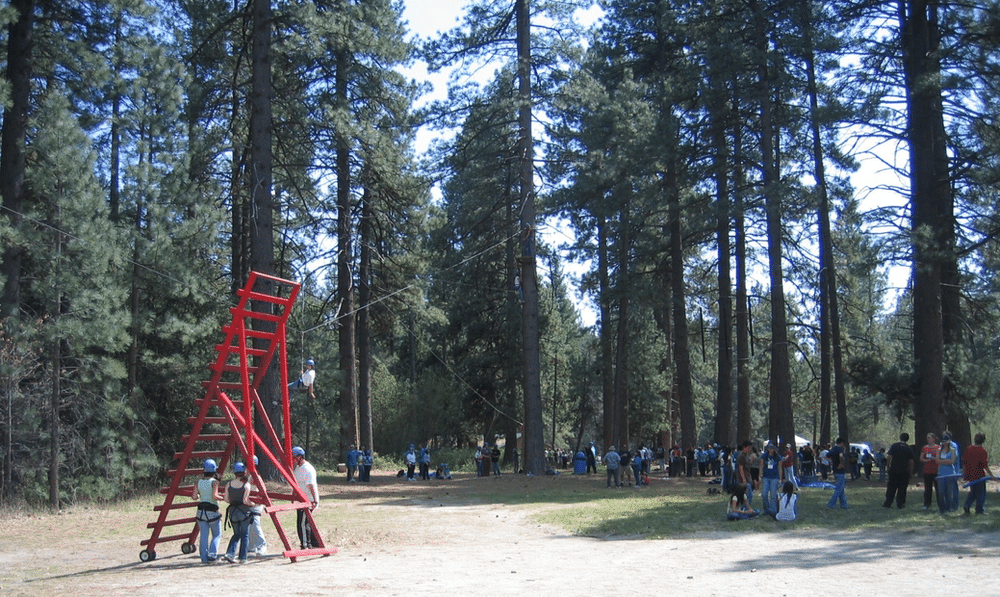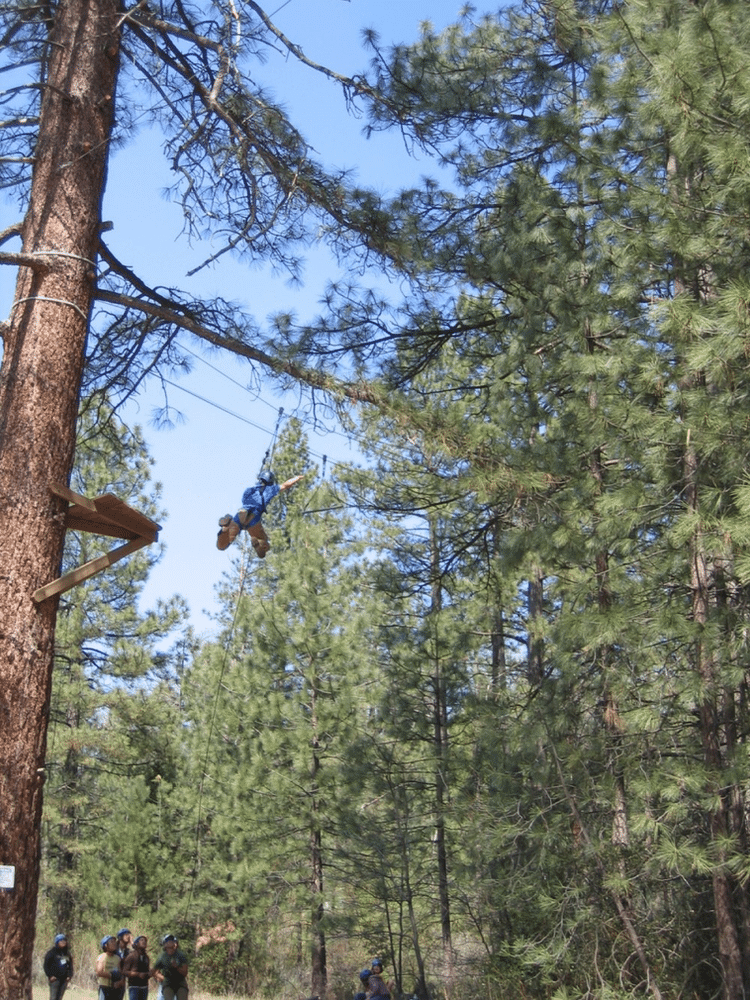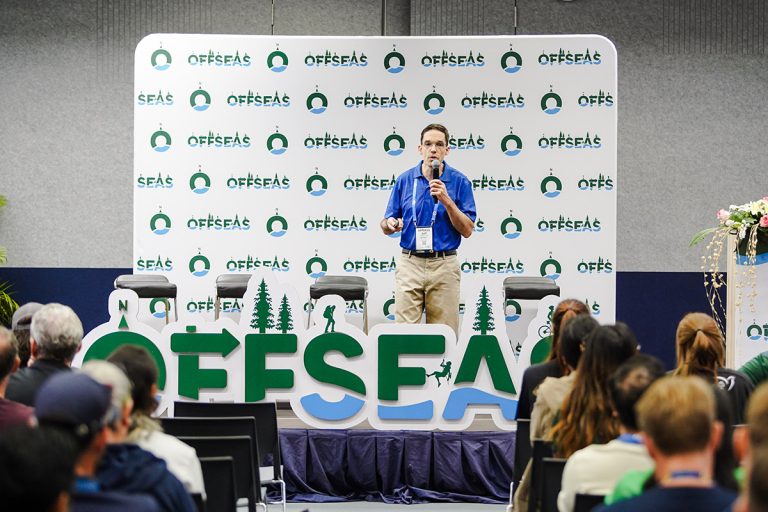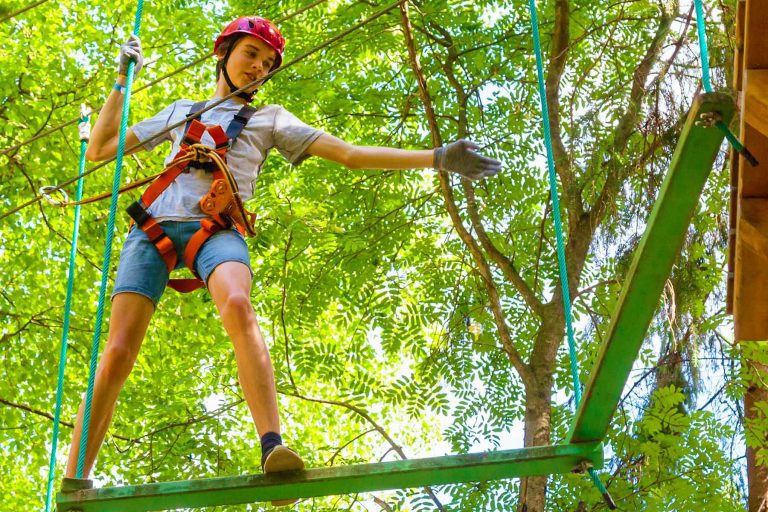
It was a beautiful spring day, and the ropes course was brightly lit by the slanting rays of sunlight coming through the tall pines. Sixty-five middle schoolers were assembled under the trees, for a day of challenge and adventure traversing the ropes course elements strung high in the trees, part of a week-long outdoor camp experience.
Things proceeded smoothly, and the kids were having a great time. Just before 5 pm, as the last participants were lined up to experience the Zipline element, a new employee, supervised by a relatively new Ropes Course site manager, unclipped an 11-year-old girl from her Zipline tether and sent her zooming down the cable.
The zipline cable, approximately 100 meters long, has a slight U-bend in its shape. Participants zip from the tree-top launching platform down the line, almost to the end where the cable rises again to its attachment on a second tree, and then slide down to the lowest point in the cable.
At that point, the participant is hanging some 12 to 15 feet above the ground. A massive, heavy wooden ladder is wheeled in by a team of helpers, and the participant climbs down the ladder.
The ladder is then wheeled a safe distance away, and another participant is ready to launch.
Only this time, the facilitator forgot to check that the ladder had been wheeled away, before he sent the 11 year-old down the zipline. The girl zoomed down the Zipline cable and crashed at high speed into the wooden ladder. The force of the impact stunned her, and she hung limply, not moving.
Facilitators lowered her to the ground and stabilized her spine for a possible spine injury. She was transported by ambulance to the hospital, where she was diagnosed with bruises and released. After a day of rest, with mild residual soreness in her chest, the girl was able to continue participating in activities.
The facilitator, writing in the incident report, admitted “I sent [the participant] down without checking on the ladder.” Clearly, the facilitator’s error was directly responsible for the incident.
A significant mistake, leading to injury–and possibly a lawsuit for negligence. An easy call to fire the careless facilitator, right?
Not so fast.
Let’s take a look at all the causes that led to the incident, and not reflexively blame the person closest to the incident.
The incident review noted a number of potential contributing factors:
- The Course Director was busy facilitating an event, and not free to be a safety monitor.
- The Course Director (who was also the Program Director) was new in their job, and felt they might not be fully qualified for the Course Director position at the ropes course.
- The facilitator on the launch platform was new. They had completed some training, but not the new, enhanced ropes course training the organization was in the process of implementing.
- The incident occurred at the final moments of the day, when facilitators may have been tired.
- The ladder is very heavy, making it more difficult to move back and forth, and more dangerous in a collision.
The incident review made a number of recommendations, including:
- Ensure sufficient staff are on site for safety supervision, through changing recruiting and HR practice
- Ensure all staff complete the full set of training activities before working at the ropes course
- Review training materials for all program activities to ensure they are sufficiently thorough
- Reduce director-level turnover, to support better supervision of activities and facilitator staff
- Improve documentation of procedures for Zipline operation
- Create a series of “Clear on the ground!” commands, similar to on-belay climbing commands, to ensure participants are released from the launch platform only when ground area is clear
- Lower zip line cable so a smaller, lighter ladder can be used
The review shows there’s more to the story than an inattentive facilitator. In fact, most of the changes recommended are at the senior management level—hiring, training, procedure development, equipment improvement.
The facilitator was not fired—or punished in any way, in fact—and continued to keep their job. A months-long process of administrative-level improvements was put in place, however, to help ensure this kind of error never happens again.
This is Just Culture.
Just Culture
Just Culture is a concept that encourages focusing on addressing the underlying factors that lead to an incident, rather than simply automatically blaming the person directly involved.
We know, from analyzing how incidents occur, that most incidents are not simply the result of an error by a person. They are caused by multiple factors—often involving multiple people, and many layers or an organization, and even at other organizations or in other groups.
A Just Culture acknowledges this fact.
In Just Culture, individuals aren’t penalized for making human mistakes. Instead, underlying causes are sought out and addressed.
This makes it more likely that the actual causes of an incident are paid attention to.
And it fosters an environment where individuals are treated with respect, trusted, and valued.
In a Just Culture environment, individuals aren’t afraid to report incidents, even if due to their own honest mistake.
This increases the probability that incidents will be reported promptly, fully and accurately. And it therefore enables the organization to learn from incidents, and better to prevent their reoccurrence.
From “Kill the Messenger” to Just Culture: A Brief History
“Off with his head!”
The idea of punishing someone close to an incident—or even just close to the delivery of bad news—reaches back to antiquity. The idea is recorded in writings of the ancient Greeks, thousands of years ago.
However, organizations interested in actually improving outcomes, rather than just venting displeasure when things don’t go as planned, must act more responsibly.
In the 1970s, airlines became interested in determining the underlying causes behind airplane crashes, rather than just saying “pilot error,” firing the cockpit crew, and moving on.
Healthcare organizations also became interested in reducing preventable medical errors, such as unintentional overdosing and wrong-site surgery, cited as the third leading cause of death after heart disease and cancer. Research indicated “the majority of medical errors do not result from individual recklessness or the actions of a particular group. More commonly, errors are caused by faulty systems, processes, and conditions that lead people to make mistakes or fail to prevent them.”
Healthcare organizations, then became another pioneer of Just Culture in contemporary risk management.
Other professional fields, such as the outdoor education, outdoor recreation, experiential adventure, wilderness expedition and travel fields, learned about these efforts and began to incorporate Just Culture into their own risk management systems.
Safety, But With Accountability
Just Culture doesn’t mean that anyone can do anything without negative consequences.
In Just Culture, individuals are still accountable for their actions. However, discipline is linked to inappropriate behavior, rather than harm.
Just Culture recognizes that everyone makes mistakes. But a distinction is drawn between honest, human errors, and intentional bad acts:
- Human mistakes: In Just Culture, these are treated as a learning opportunity for the organization and its staff. Coaching, training and similar support may be provided to persons involved.
- Gross negligence (willful misconduct) and reckless behavior: Disciplinary action is applied to the perpetrator. The incident is also treated as a learning opportunity.
Here, inappropriate behavior may be subject to discipline, even if no harm is caused. And conversely, there may be no disciplinary consequences for a person whose actions directly led to an incident, even if harm (due to a human mistake) has occurred.
Just Culture: An Idea Based in Systems Theory
Incidents don’t generally occur due to a single, identifiable cause, which leads to an incident. Rather, incidents occur because of a number of risk factors, some of which may not be known, and which interact with each other in unpredictable ways to lead to an incident.
An incident and its multiple causes, then, exist in a complex system.
This is essence, is the idea of systems theory applied to incident causation.
Some risk managers use the term “complex sociotechnical systems theory” to describe this idea, noting that people and technology interact in the complex system in which incidents occur. Led outdoor activities, such as in outdoor education, are seen as a complex socio-technical system.
Just Culture reflects this model of incident causation. Don’t simply blame the person closest to the incident—the inattentive belayer who let go of the climbing rope, the trip leader who miscalculated the route and got the group lost in the dark and cold. Instead, look for the underlying causes of the incident.
The idea of “systems thinking” is known by other names, associated with different theoreticians: Safety-II (Hollnagel), Safety Differently (Dekker), guided adaptability (Provan et al.), and High Reliability Organizations (Rochlin et al.), along with resilience engineering.
No matter the term used, the underlying concept is that to prevent incidents, the risk manager must address all known factors leading to the incident—and, as some factors may be unknowable, build in additional capacity—through extra resources, redundancy, and an appropriate balance of rules and nimble judgment—to withstand unanticipated mishaps.
Just Culture: An Element of Safety Culture
In addition to looking at Just Culture from the perspective of systems thinking, we can also see Just Culture as an aspect of an organization’s culture.
More specifically, we can think about Just Culture as an aspect of an organization’s safety culture—the values and beliefs about safety that drive behavior, and the priority given to safety relative to other legitimate, competing organizational objectives.
We can understand “culture” as the values and beliefs that drive behavior. In Just Culture, beliefs include:
- People are part of the solution—their flexibility, judgement, and ability to adapt to changing conditions
- Human error is inevitable
- It’s appropriate to support people with information, resources and flexibility to learn from errors
- Errors spring from a complex system with multiple elements
- It’s ineffective to just blame the person closest to the incident
When in incident happens, in a Just Culture environment, the organization seeks to identify the underlying causes to the mishap. And individuals within the organization intentionally and consciously resist the tendency to blame individuals—especially their supervisees—for problems, rather than investigating their own role and other causal factors.
Culture, being in some ways abstract, can be a challenge for risk managers and safety professionals to address on a practical level.
A non-scientific assessment of safety culture in an organization, developed by the consultancy Viristar, is available here. This assessment tool can help individuals evaluate the safety culture at their organization, including the presence or absence of Just Culture, along with 10 other dimensions of safety culture, including:
- Safety Mission & Vision
- Leadership Support
- Inclusion & Ownership
- Policies, Procedures, Structures & Systems
- Systems Thinking
- Sufficient Resources
- Culture of Questioning
- Collaboration
- Communication
- Continuous Improvement
A facilitated experience in using the survey instrument is available as part of a larger risk management training for outdoor and experiential programs.
Further Resources
An entire book dedicated to Just Culture is available from noted safety expert Sidney Dekker: Just Culture: Restoring Trust and Accountability in Your Organization, Third Edition.
An exploration of Just Culture, safety culture, systems thinking and other aspects of risk management for experiential, adventure, travel-based and outdoor programs is available in the textbook Risk Management for Outdoor Programs: A Guide to Safety in Outdoor Education, Recreation and Adventure.
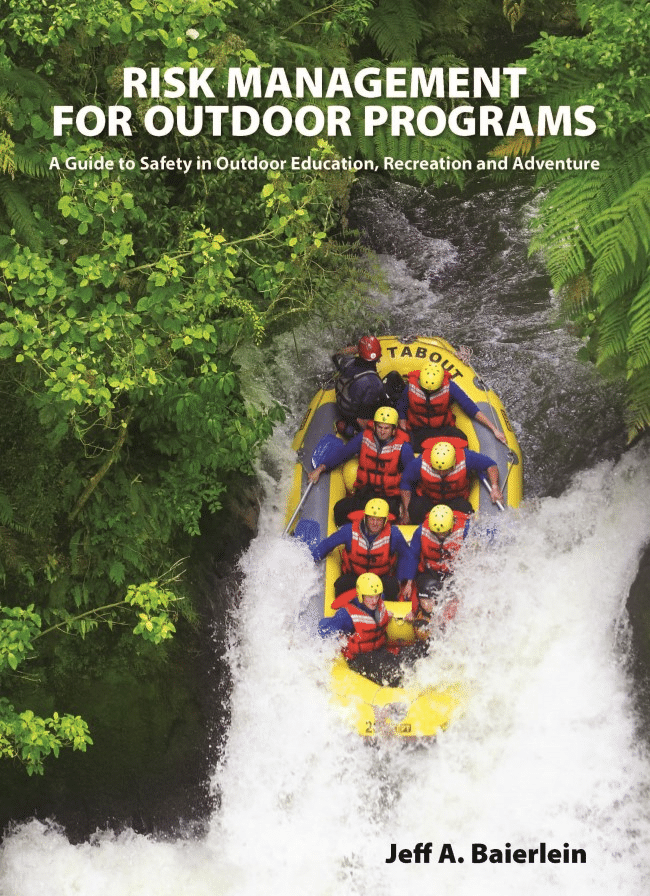
And finally, a 40-hour online course exploring Just Culture and other aspects of safety for experiential and outdoor programs is available. The Risk Management for Outdoor Programs course, which takes place over 4 weeks, provides a comprehensive training on outdoor safety, including self-study and group discussions, and guides participants to evaluate Just Culture and other aspects of safety management in their own organization.
In Summary
Just Culture reminds us that when an error occurs, we must resist the tendency to automatically blame the person most directly associated with the incident.
Instead, to effectively understand how to prevent future mishaps, we must look for and address the underlying factors that led to the error.
In Just Culture, the focus is on what went wrong, not who caused the problem.
This encourages people to report, rather than cover up, incidents, and helps the organization identify and resolve the underlying safety issues.
Back at the ropes course, the organization’s administrative staff worked hard to improve staff training, reduce personnel turnover, implement improved Zipline operations procedures, and lower the Zipline cable height. Relations with the family of the injured person remained amicable. Staff—with the benefit of improved systems and structures—continued to facilitate ropes course experiences, providing team-building adventures for thousands of new participants without incident.
By addressing the underlying factors that led to the Zipline crash, the organization was able to make effective safety improvements and continue providing outdoor experiences in the years that followed.

